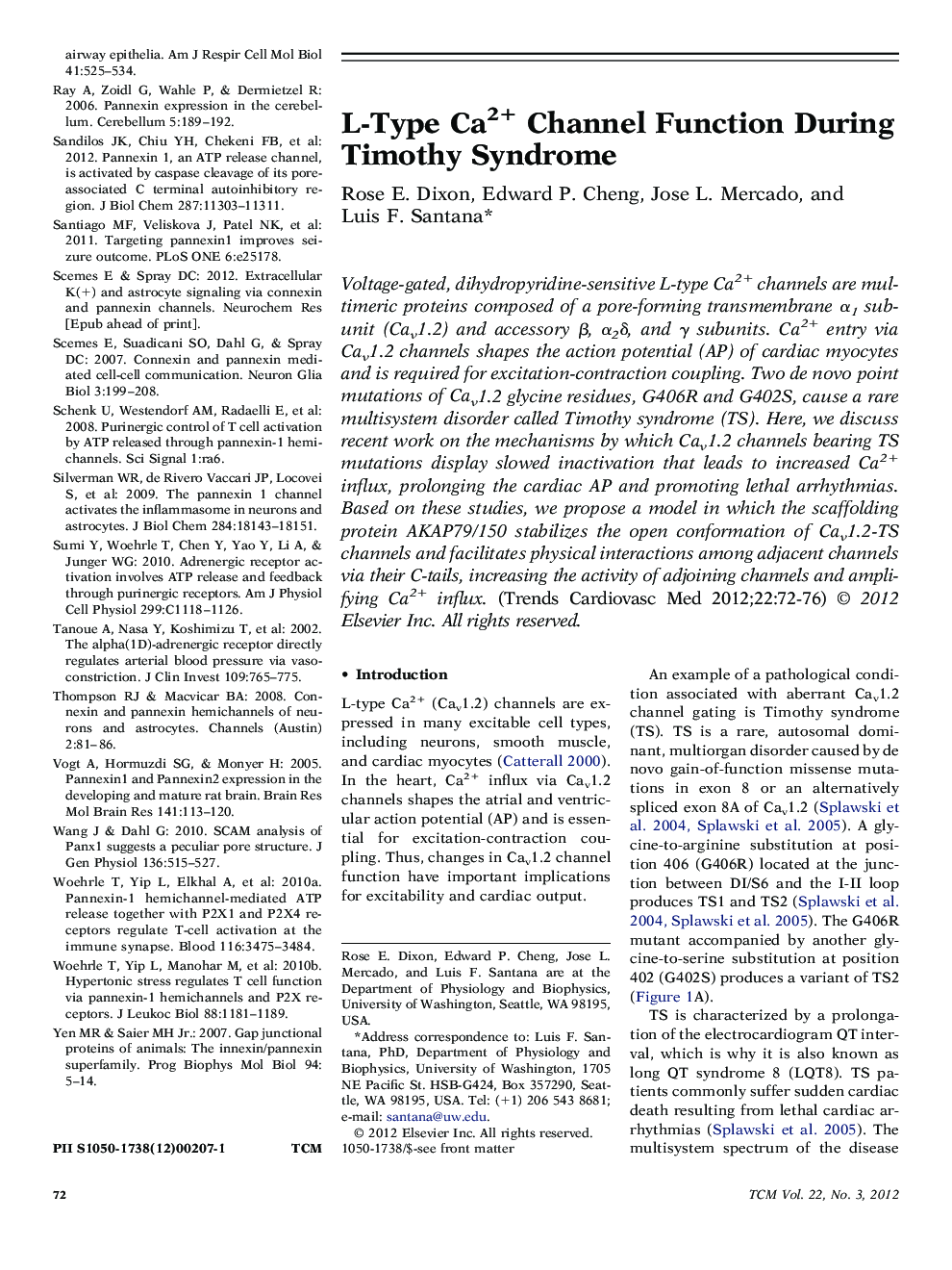| Article ID | Journal | Published Year | Pages | File Type |
|---|---|---|---|---|
| 3030587 | Trends in Cardiovascular Medicine | 2012 | 5 Pages |
Voltage-gated, dihydropyridine-sensitive L-type Ca2+ channels are multimeric proteins composed of a pore-forming transmembrane α1 subunit (Cav1.2) and accessory β, α2δ, and γ subunits. Ca2+ entry via Cav1.2 channels shapes the action potential (AP) of cardiac myocytes and is required for excitation-contraction coupling. Two de novo point mutations of Cav1.2 glycine residues, G406R and G402S, cause a rare multisystem disorder called Timothy syndrome (TS). Here, we discuss recent work on the mechanisms by which Cav1.2 channels bearing TS mutations display slowed inactivation that leads to increased Ca2+ influx, prolonging the cardiac AP and promoting lethal arrhythmias. Based on these studies, we propose a model in which the scaffolding protein AKAP79/150 stabilizes the open conformation of Cav1.2-TS channels and facilitates physical interactions among adjacent channels via their C-tails, increasing the activity of adjoining channels and amplifying Ca2+ influx.
